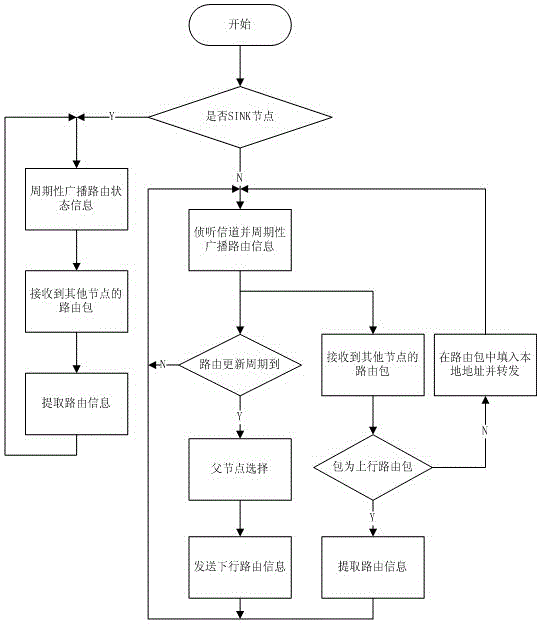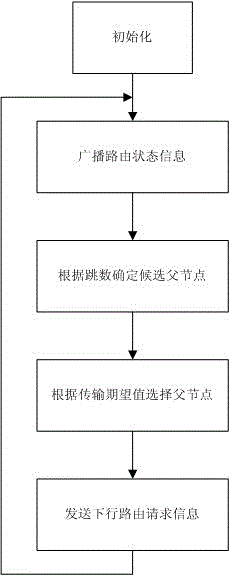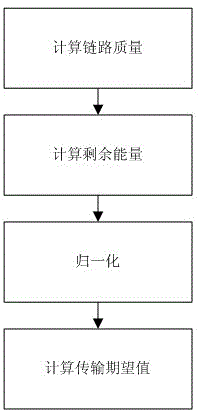Two-way energy balance wireless sensing network route method based on LEPS
A technology of wireless sensor network and energy balance, which is applied in the direction of wireless communication, energy consumption reduction, advanced technology, etc. It can solve the problems of not considering the energy factor of nodes, unable to apply data source nodes, unbalanced load, etc., so as to avoid premature Invalidation, saving resources, achieving simple effects
- Summary
- Abstract
- Description
- Claims
- Application Information
AI Technical Summary
Problems solved by technology
Method used
Image
Examples
Embodiment Construction
[0049] The present invention will be further elucidated below in conjunction with the accompanying drawings and specific embodiments.
[0050] like figure 1 As shown, the working process of the two-way energy balance routing method based on the LEPS protocol disclosed in the present invention is as follows: After the node is powered on, it first judges whether it is a sink node or an ordinary node. If it is a sink node, it will first perform corresponding initialization, and then start to broadcast routing status information periodically, while keeping listening to the channel, receiving routing information from common nodes, and maintaining the downlink routing table. If it is an ordinary node, the node first performs corresponding initialization, and then starts to broadcast routing status information and listen to the channel. In a routing update cycle, the node receives routing packets from other nodes and makes a judgment. If the received routing packet is an uplink routi...
PUM
 Login to View More
Login to View More Abstract
Description
Claims
Application Information
 Login to View More
Login to View More - R&D
- Intellectual Property
- Life Sciences
- Materials
- Tech Scout
- Unparalleled Data Quality
- Higher Quality Content
- 60% Fewer Hallucinations
Browse by: Latest US Patents, China's latest patents, Technical Efficacy Thesaurus, Application Domain, Technology Topic, Popular Technical Reports.
© 2025 PatSnap. All rights reserved.Legal|Privacy policy|Modern Slavery Act Transparency Statement|Sitemap|About US| Contact US: help@patsnap.com



